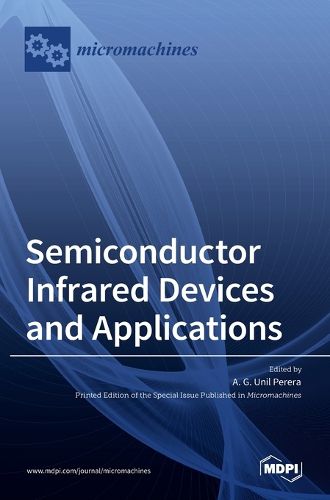Readings Newsletter
Become a Readings Member to make your shopping experience even easier.
Sign in or sign up for free!
You’re not far away from qualifying for FREE standard shipping within Australia
You’ve qualified for FREE standard shipping within Australia
The cart is loading…






This title is printed to order. This book may have been self-published. If so, we cannot guarantee the quality of the content. In the main most books will have gone through the editing process however some may not. We therefore suggest that you be aware of this before ordering this book. If in doubt check either the author or publisher’s details as we are unable to accept any returns unless they are faulty. Please contact us if you have any questions.
Infrared (IR) technologies-from Herschel’s initial experiment in the 1800s to thermal detector development in the 1900s, followed by defense-focused developments using HgCdTe-have now incorporated a myriad of novel materials for a wide variety of applications in numerous high-impact fields. These include astronomy applications; composition identifications; toxic gas and explosive detection; medical diagnostics; and industrial, commercial, imaging, and security applications. Various types of semiconductor-based (including quantum well, dot, ring, wire, dot in well, hetero and/or homo junction, Type II super lattice, and Schottky) IR (photon) detectors, based on various materials (type IV, III-V, and II-VI), have been developed to satisfy these needs. Currently, room temperature detectors operating over a wide wavelength range from near IR to terahertz are available in various forms, including focal plane array cameras. Recent advances include performance enhancements by using surface Plasmon and ultrafast, high-sensitivity 2D materials for infrared sensing. Specialized detectors with features such as multiband, selectable wavelength, polarization sensitive, high operating temperature, and high performance (including but not limited to very low dark currents) are also being developed.
This Special Issue highlights advances in these various types of infrared detectors based on various material systems.
$9.00 standard shipping within Australia
FREE standard shipping within Australia for orders over $100.00
Express & International shipping calculated at checkout
This title is printed to order. This book may have been self-published. If so, we cannot guarantee the quality of the content. In the main most books will have gone through the editing process however some may not. We therefore suggest that you be aware of this before ordering this book. If in doubt check either the author or publisher’s details as we are unable to accept any returns unless they are faulty. Please contact us if you have any questions.
Infrared (IR) technologies-from Herschel’s initial experiment in the 1800s to thermal detector development in the 1900s, followed by defense-focused developments using HgCdTe-have now incorporated a myriad of novel materials for a wide variety of applications in numerous high-impact fields. These include astronomy applications; composition identifications; toxic gas and explosive detection; medical diagnostics; and industrial, commercial, imaging, and security applications. Various types of semiconductor-based (including quantum well, dot, ring, wire, dot in well, hetero and/or homo junction, Type II super lattice, and Schottky) IR (photon) detectors, based on various materials (type IV, III-V, and II-VI), have been developed to satisfy these needs. Currently, room temperature detectors operating over a wide wavelength range from near IR to terahertz are available in various forms, including focal plane array cameras. Recent advances include performance enhancements by using surface Plasmon and ultrafast, high-sensitivity 2D materials for infrared sensing. Specialized detectors with features such as multiband, selectable wavelength, polarization sensitive, high operating temperature, and high performance (including but not limited to very low dark currents) are also being developed.
This Special Issue highlights advances in these various types of infrared detectors based on various material systems.